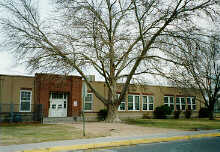The field of occupational health, or health and safety, encompasses the hazards of work, and the prevention of injuries and illnesses that may arise from working environments. How serious a health problem is work-related disease or injury? Though newspapers remind us frequently of mine explosions, falls from unsafe scaffolding, even lung cancers from uranium mining, few people realize the epidemic proportions of the problem. In the U.S., estimates range from 7,000 to 13,000 workers are killed each year on the job. One hundred thousand people annually lose their lives to occupational disease (twice the number of automobile accident deaths). There are close to 20 million injuries with another 390,000 people seriously ill each year from their work. Skin diseases are the most common, followed by repeated trauma disorders and lung diseases from toxins and dusts.
It is important for children, high school youth, working adults--including teachers and school staff members--to look critically at their work environments and evaluate the problems that may cause illness. The children in Albuquerque schools may grow up to work in New Mexico's high-hazard industries, which employ one-fourth of the state work force--construction, mining, transportation /public utilities, and manufacturing. The majority will work in small workshops where the hazards are less known, less controlled and therefore, potentially more serious.
These on-the-job hazards include unguarded machinery, ungrounded electrical currents, fires, physical agents such as excessive heat or cold, high noise levels, radiation, poor lighting, vibration; and toxic chemicals, dusts, and fumes. Moreover, hazards can go beyond direct physical or chemical agents and affect more than the individual worker. Increasingly ergonomics, the relationship of the person to their work environment, is becoming of more concern. Repetitive motion, including typing long hours on computers with the wrong chair, wrong height, or not enough breaks, can cause carpal tunnel syndrome or tendonitis. Stresses at work can cause ulcers, risk of heart disease, and mental distress. Children may develop illnesses from dusts brought home on the workers' clothes, or suffer emotionally and financially when a parent becomes sick from work.
With the passage of the Occupational Safety and Health Act (OSHA) in 1970, Congress adopted its first comprehensive federal program to protect the health and safety of the American public. In New Mexico, state government began to administer the federal law in 1976 through its own program, the Occupational Health and Safety Bureau (OHSB), within the Department of Health and Environment (505-827-4230). This state program must adopt regulations as strong as the federal ones and can provide stronger protection, if indicated, to all public and private employees. (Federal employees in New Mexico are still covered by federal OSHA.)
The state OHSB inspects hazardous workplaces when workers make health and safety complaints, which can be done anonymously. The state OHSB also provides consultation to employers, employees, physicians, and the public, upon request.
Under OHSB (OSHA), employers' responsibilities are as follows:
Under OHSB regulations, employees have the following rights:
 |
The best way to prevent occupational disease or injury is to develop a health and safety program. One method is a school committee composed of staff, administration, faculty, and students. The committee could survey the school regularly to identify the hazards, analyze the protective controls, and make recommendations for improvement and training. To identify hazards, the committee should look for strong odors, dust clouds, loud noises, spilled chemicals, and unlabeled chemicals. Students and faculty could be asked if they've had health complaints that require further investigation. The APS Risk Management Department is responsible on the district level for employee protection, workers' compensation, fire protection, and environmental pollutants control and disposal. Useful resources are the OHSB, a variety of clinics around town, including the University Employee Occupational Health Service, and the unions, especially the international office.
|
HAZARDS
| |||||||
| Job Title/Place | Chemical | Physical | Safety | Social | |||
| Auto Mechanic | carbon monoxide asbestos from brake drums | lifting tool vibration impact noise | electrical hazards unguarded machinery | ||||
| Nurse | infectious agents from patient illness chemicals | radiation lifting | accidents | shift work understaffing | |||
|
HAZARDS
| ||||
| Job Title/Place | Chemical | Physical | Safety | Social |
| Fast Food Cook | cleaning agents pesticides |
heat | fires burns |
fast pace stress |
| Retail Store Clerk/Helper | cleansers chrome cleaners | lifting | electrical accidents | boredom |
OCCUPATIONAL HEALTH FACTS AND MYTHS*
Answer these questions by working together in small groups. Try and pick out which statements are facts and which are myths. Discuss your answers and any differences.
1. What proportion of workers are injured yearly in the U.S.?
a)1 in 10 b)1 in 20 c)1 in 100 d)1 in 200
2. Each year, the number of workers who die from occupational disease is
a)10,000 b)50,000 c)100,000 d)200,000
3. Most health professionals and doctors have been trained in job-related
disease.
True False
4. Schools are a safe place to work for teachers and staff.
True False
5. Acute health effects are more serious than chronic health effects.
True False
6. In large enough doses, any chemical will cause cancer.
True False
7. Out of over 55,000 chemical substances with known toxic effects, how many
are tested and regulated?
a)100 b)600 c)1000 d)5000
8. The main cause of job stress is ____________________________________________.
9. The best way to control for toxic exposures is
a)Respirators b)Ventilation
10. Most accidents happen because people are careless.
True False
11. All workers in the U.S. are covered by the OSHA Act of 1970.
True False
12. Under OSHA, both employees and employers are responsible for providing
a safe and healthful work environment.
True False
13. Workers have the right to file a complaint with OSHA and remain anonymous.
True False
* Developed by Nina Wallerstein, Dr. P.H.
Answers: 1-a; 2-c; 3-False; 4-Opinion question; 5-Opinion question; 6-False; 7-c; 8-Opinion question; 9-b; 10-Opinion question; 11-False; 12-False; 13-True
(Up to Section V, Back to Noise, On to Open Space)